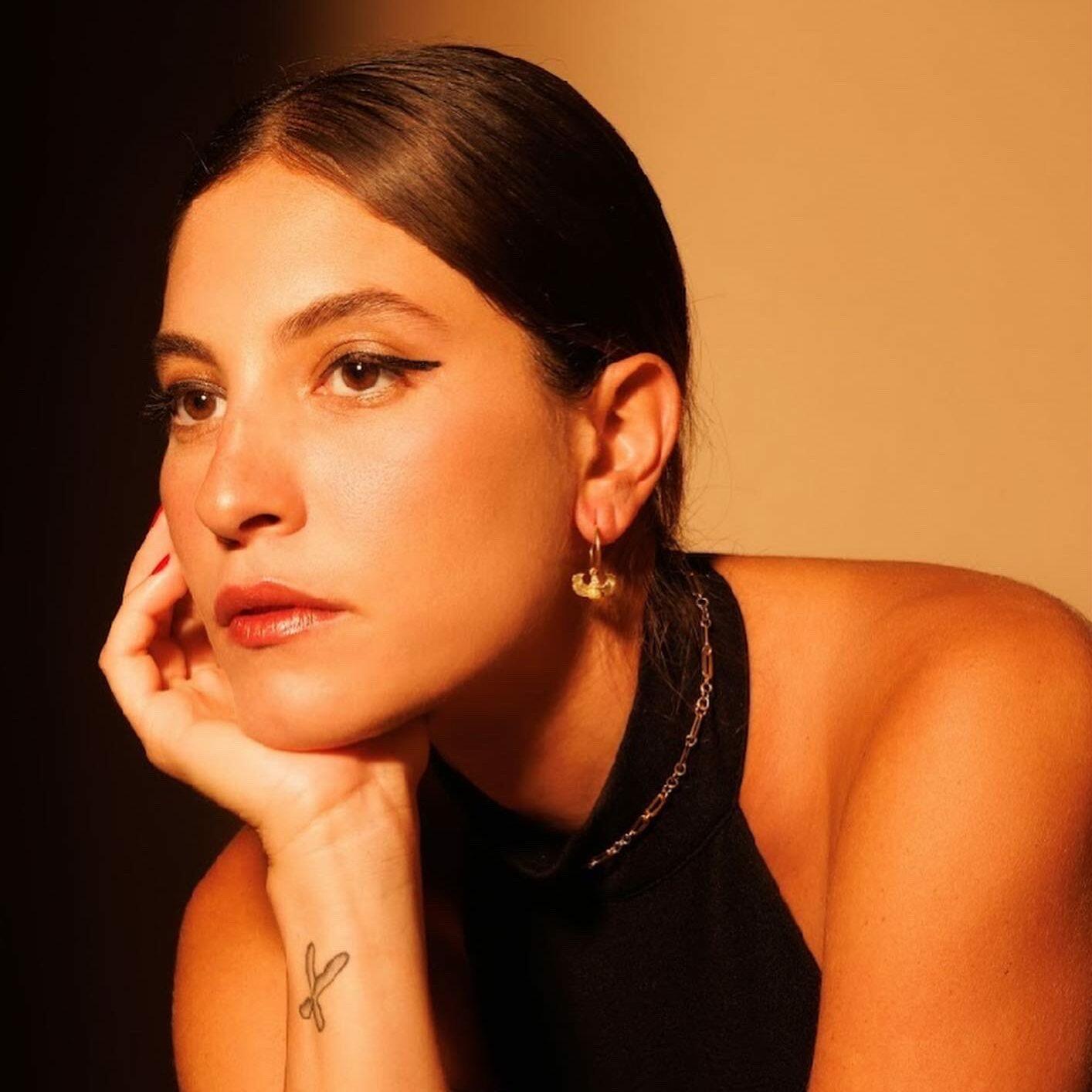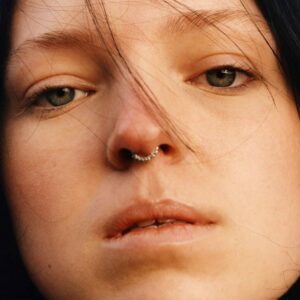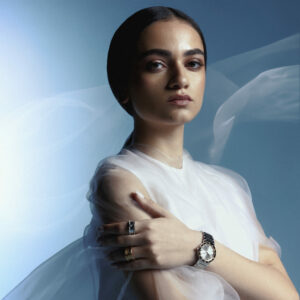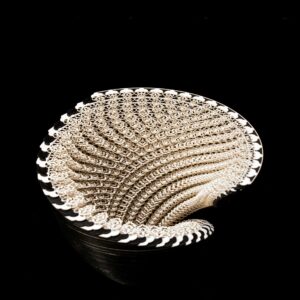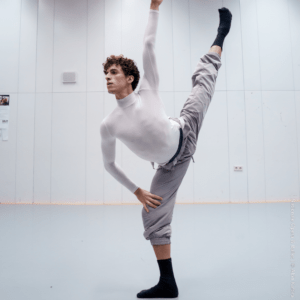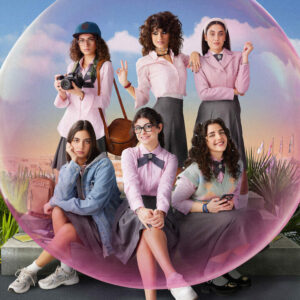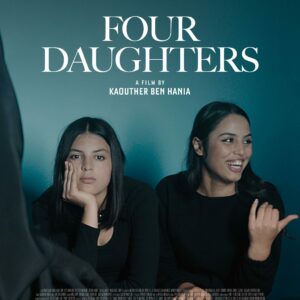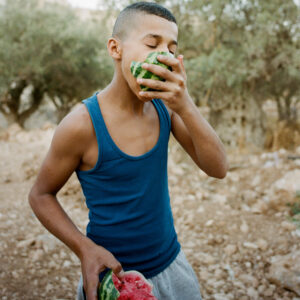Lebanese-Armenian artist Alexandra Bitar (Instagram) lets her muses fuel her creative process as she draws on their and her own experiences.
You’ve said that your creative practice is “where wondrous chromosomes transform into creatures”, can you talk us through this?
What I mean when I say “where wondrous chromosomes transform into creatures” is that I do believe that when you meet someone that is in touch with their creative side, that they are born with some kind of mystical chromosome where this magic resides, it transforms these people, in my eyes, into wondrous creatures. I think everyone has that “chromosome”, it can manifest in different ways, but some are in touch with it more than others.
So, these people are my muses, they are the people around me that inspire my work. Each collection is personal, and it depends on the people I surround myself with and what they are living, and my personal experiences.
Can you describe your earliest memory of a paintbrush?
I wouldn’t say a paintbrush, but it was at school in math class, where my boredom and lack of enthusiasm for this subject pushed me to explore creatively. I started drawing, even on my tests, and then it was at home on the weekends till I started painting big formats and did my first small exhibition at the age of 17, then 18, then my 20s when I finally decided to make a career out of it.
If you were to unlock an alter ego within you, how would you describe this persona?

I think my alter ego is my sister, I think the telepathy I have with her, and the creative connection, makes her my twin and my alter ego, I think she would probably say the same. She is a character in my comic strips, always wearing a bunny hat. Her spontaneous, methodical, introverted self is always inspiring. We are part of the same mind.
You recently had your first solo exhibition “Indulgence” in Beirut, what narrative were you presenting to your audience throughout?
The narrative I was presenting was my interpretation of the seven sins. A life without vice seems like a life without enjoyment, yet humans seem to constantly be struggling with outwardly appearing as the best version of themselves, free of sin. But how easier would life be if we befriend our inner demons, and embrace our sins, make peace with them, instead of fighting them? Let them grow organically to become driving forces in our lives?
If you were to work with any artist, dead or alive, who would it be and why?
If I had to work with any artist, I would choose Hilma af Klimt every time. I think that she is the most inspiring artist, a true visionary. I think her exhibition at the Guggenheim was the first time I cried in public. I wish I had the chance to meet her and hear about her theories.
How would you describe your relationship with your works?
My relationship with my work is very personal, sometimes toxic, but I think all artists could describe it like that. After finishing a series after months of work, it’s emotionally draining. I sometimes go through depression, every painting is a memory of a feeling.
What mindset do you tend to be in when you create? Do you have any rituals that put you in that mindset?
When I create, I can’t stop, I don’t eat, I don’t sit, I only stretch, pause, stare and paint, until I feel that a feeling has passed. My rituals are to work out before going to the studio, to calm my nerves, I have to eat something very light, because I need to produce my energy, it’s hard to explain, soul music in the background, I like having people I trust around me while I work, it calms me, it’s usually my sister, she sometimes reminds me to drink water, but other than that, she works and keeps me company. It’s a lonely career path sometimes, unless your characters are considered company.

When considering why you create your works, what can you tell us about the true meaning of your creations? Do they adopt a universal message perhaps?
The exhibitions “Abstinence,” “Functional Impairment,” and “Indulgence,” are all linked to the 4th of August blast that happened in Lebanon, and the process of healing that we all went through. The different phases and forms of suffering, as well as the evolution to a new version of yourself and a sort of liberation from the dark bubble.
What art movements inspire you the most?
The most inspiring art movements in my opinion are Dadaism, German expressionism and the Surrealist movement.
What are the main mantras that you live by?
My mantras in life:
Always be curious.
Try not to grow up.
Feel every emotion.
When you can, make people laugh.
Discover all the latest art news from the region, including interviews with creatives like Alexandra Bitar, on our Art & Culture pages.
